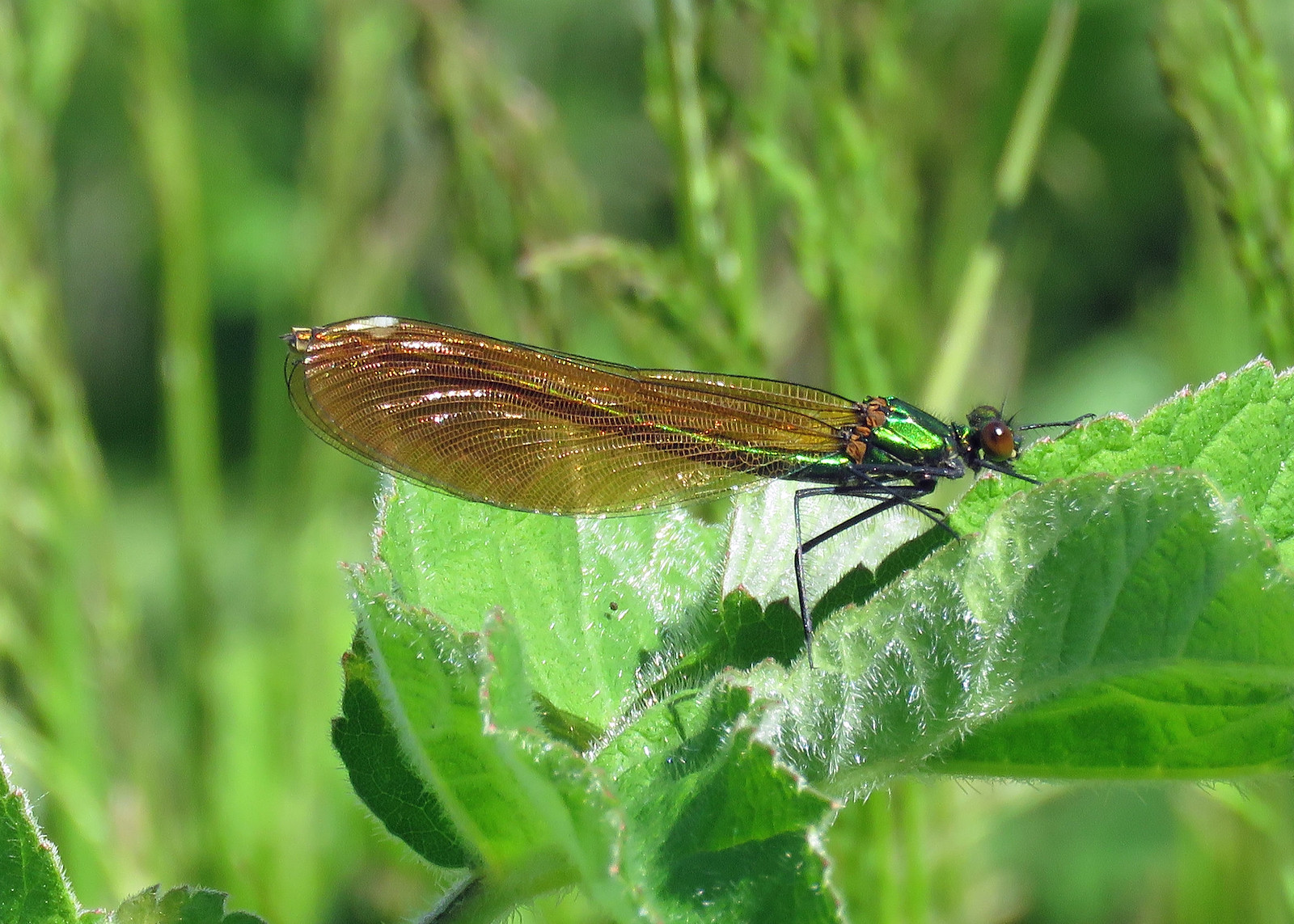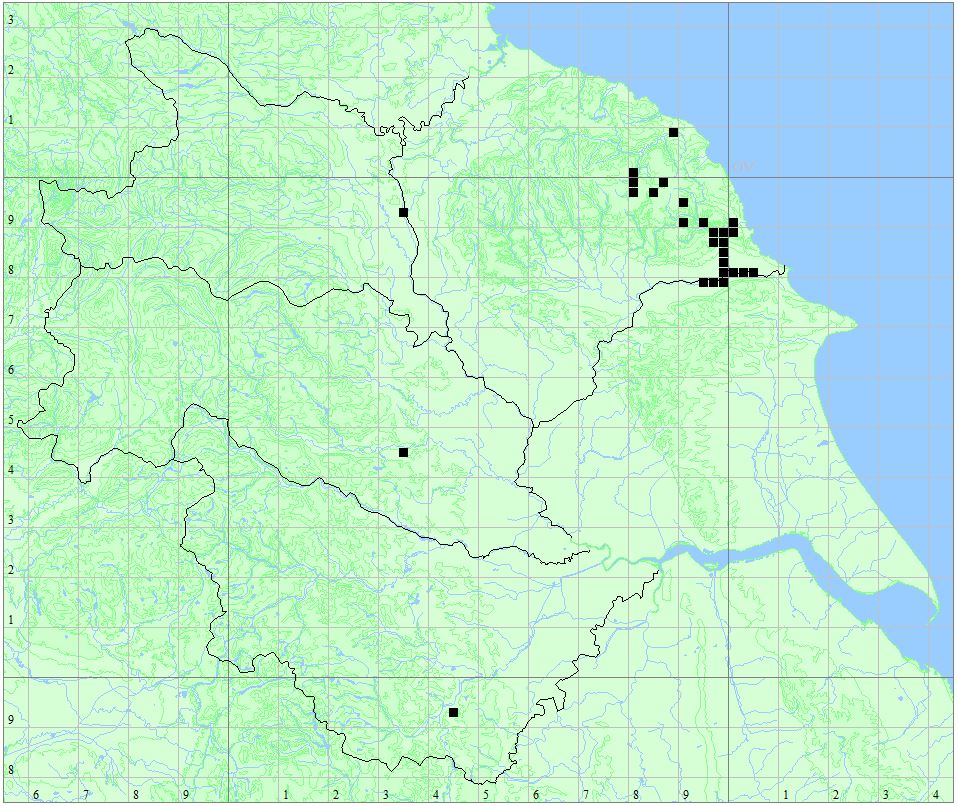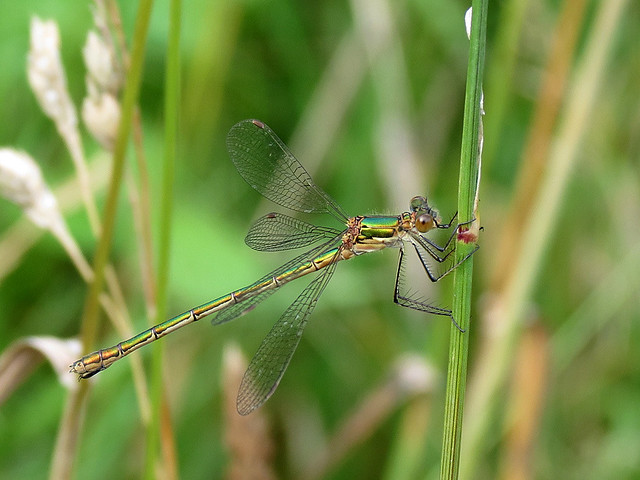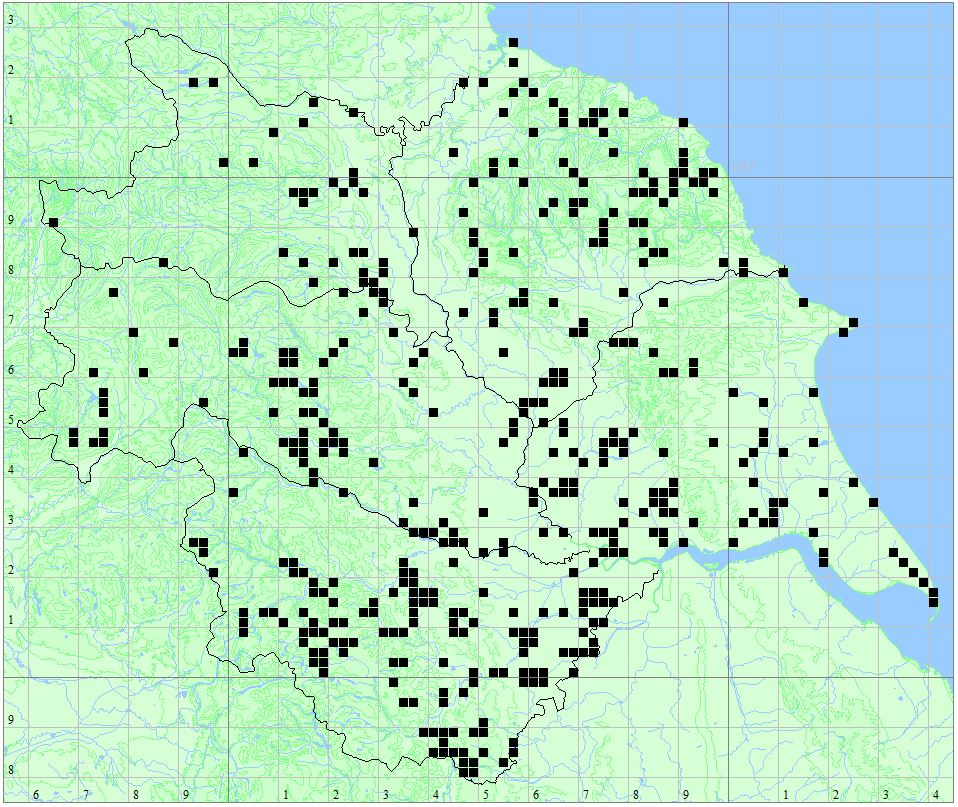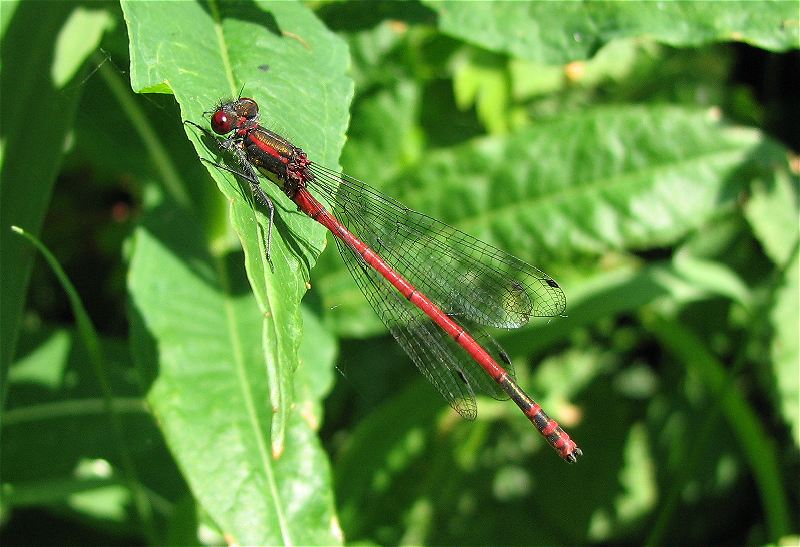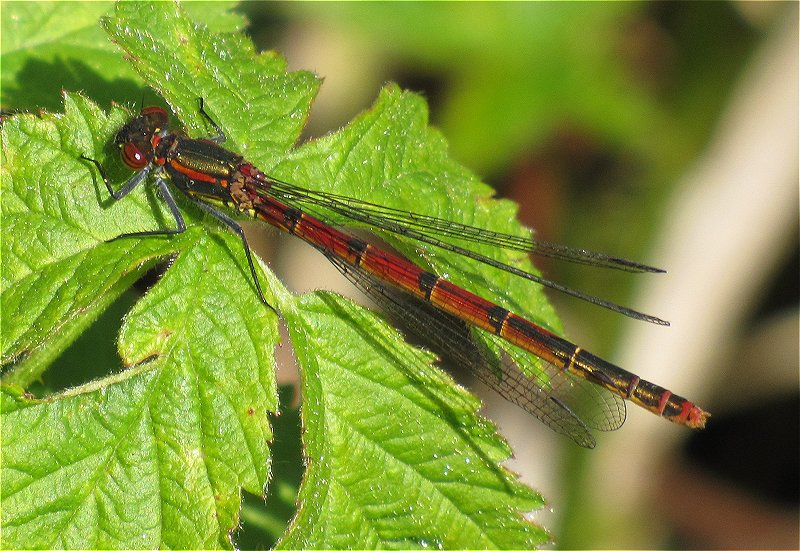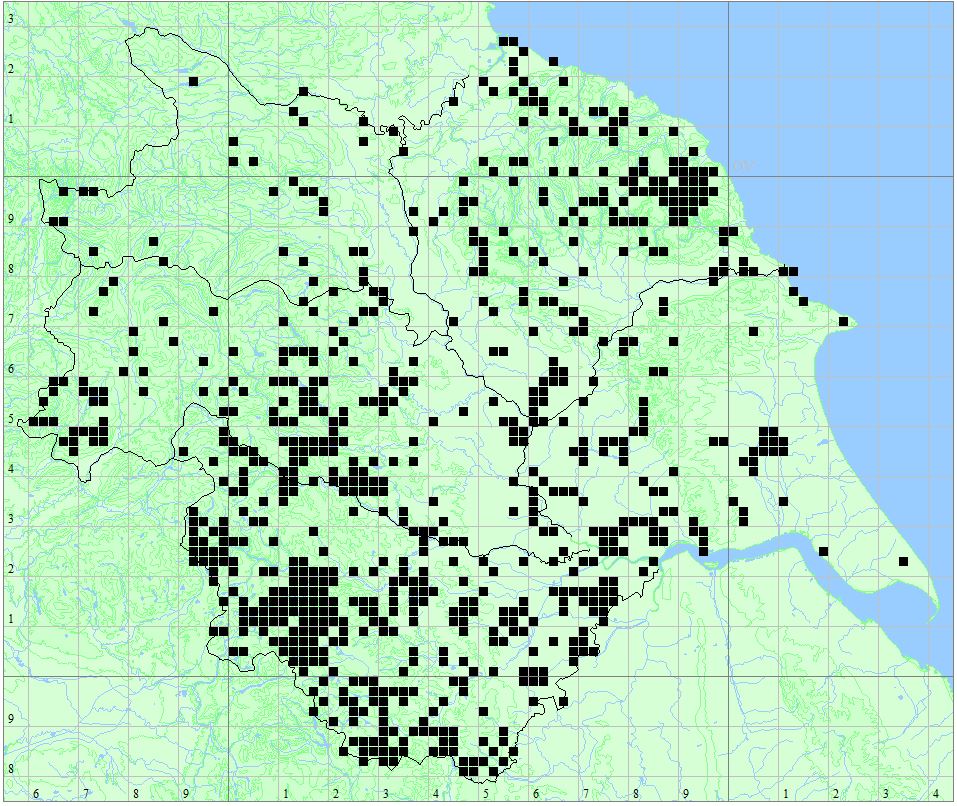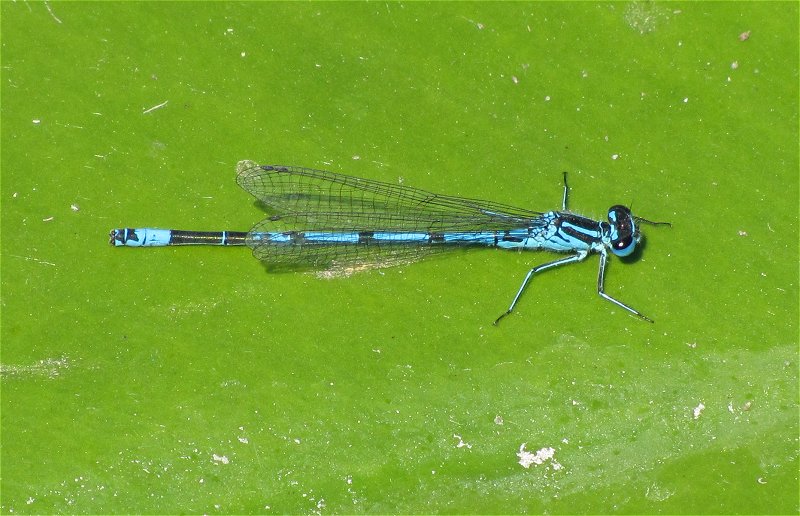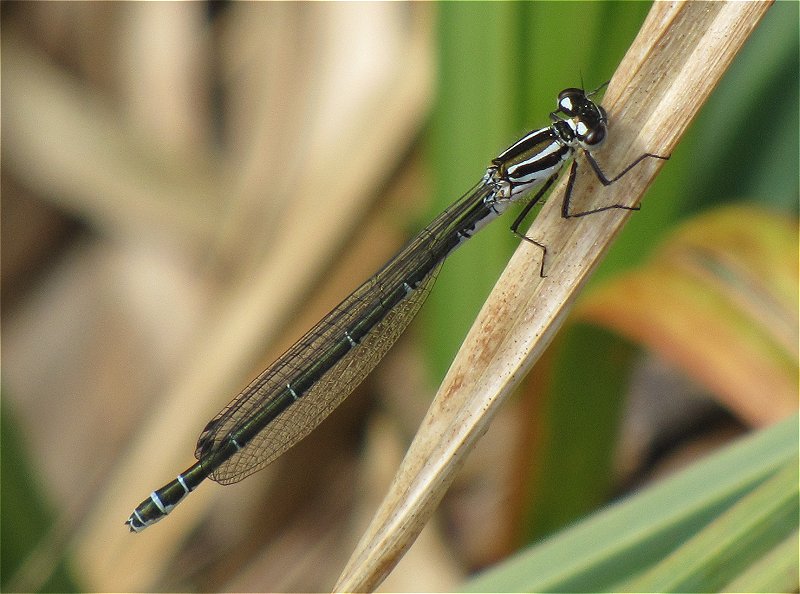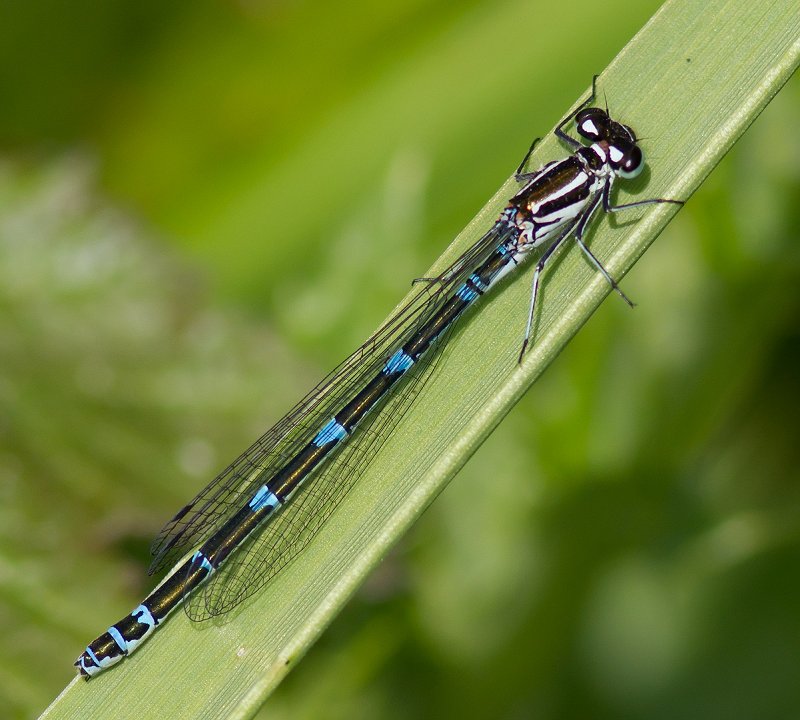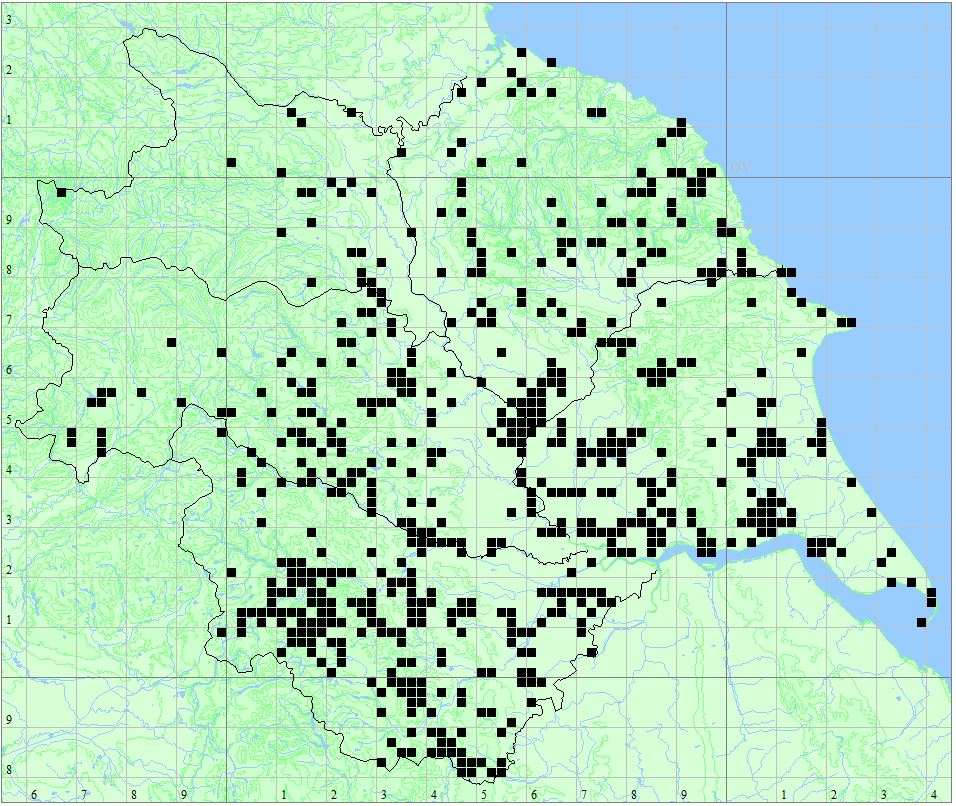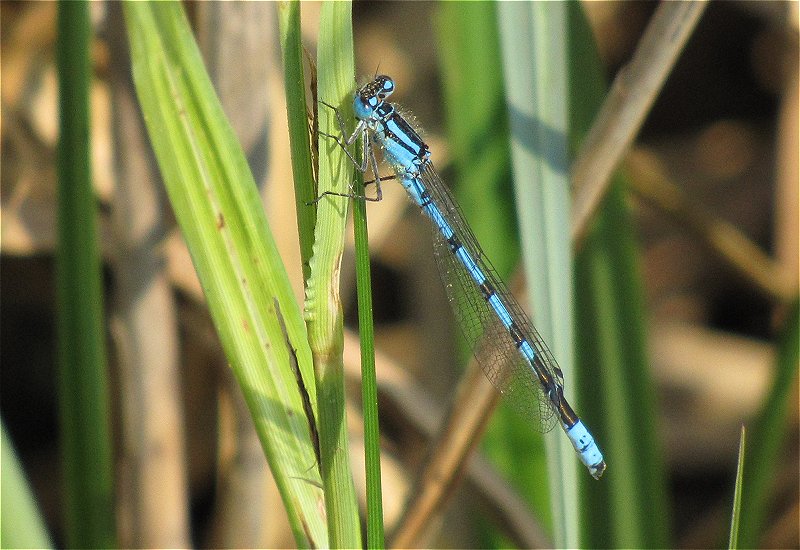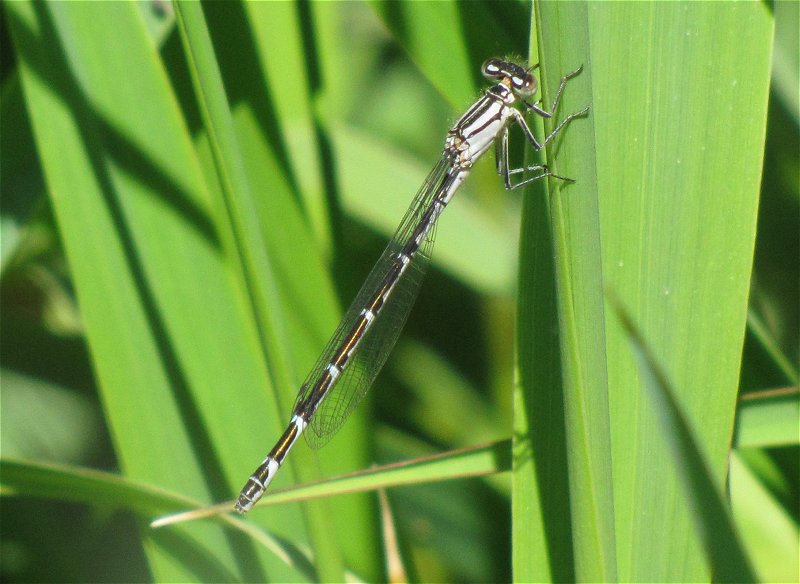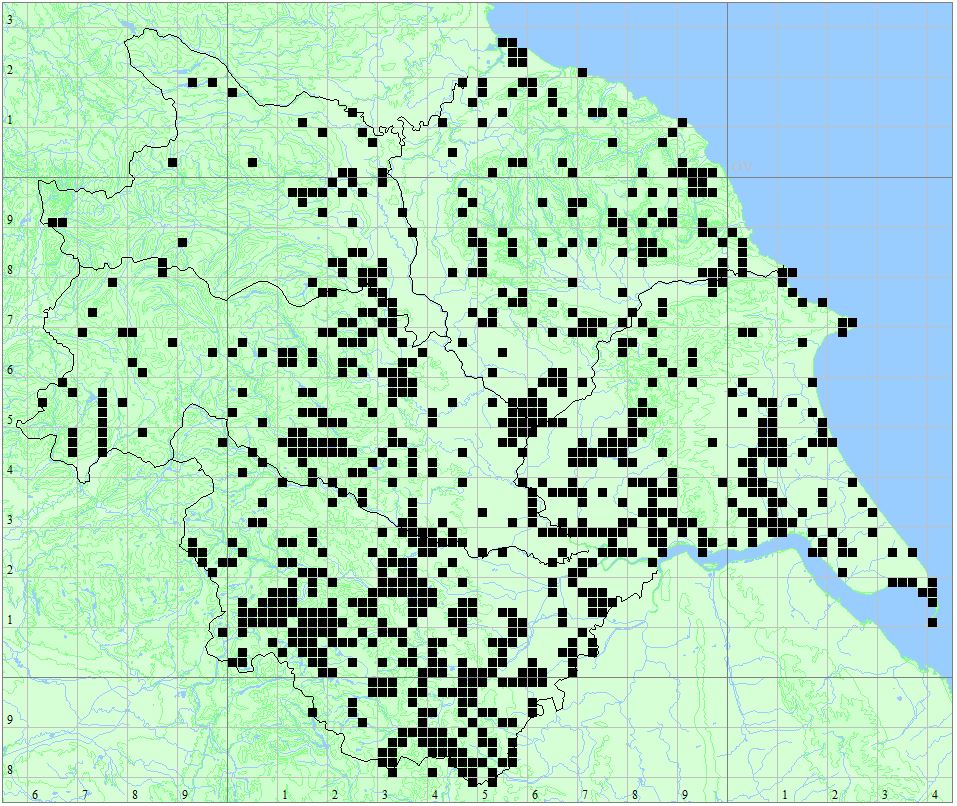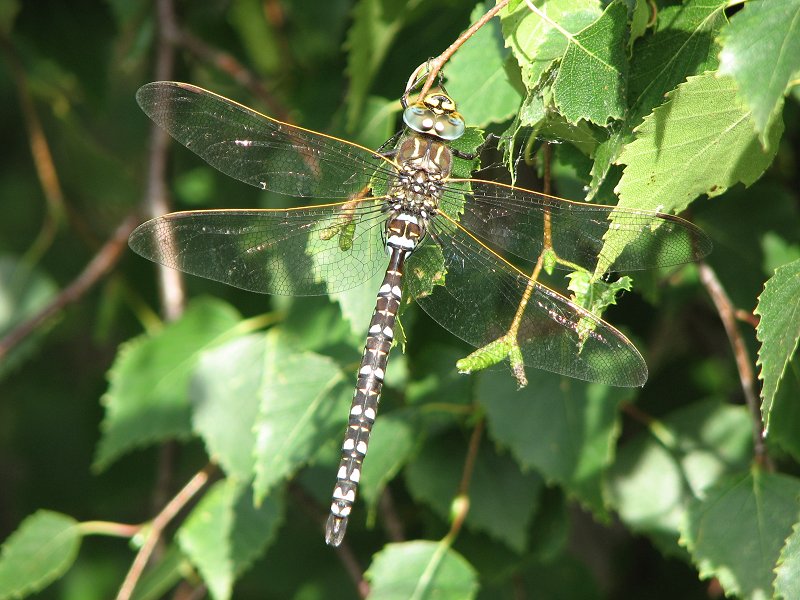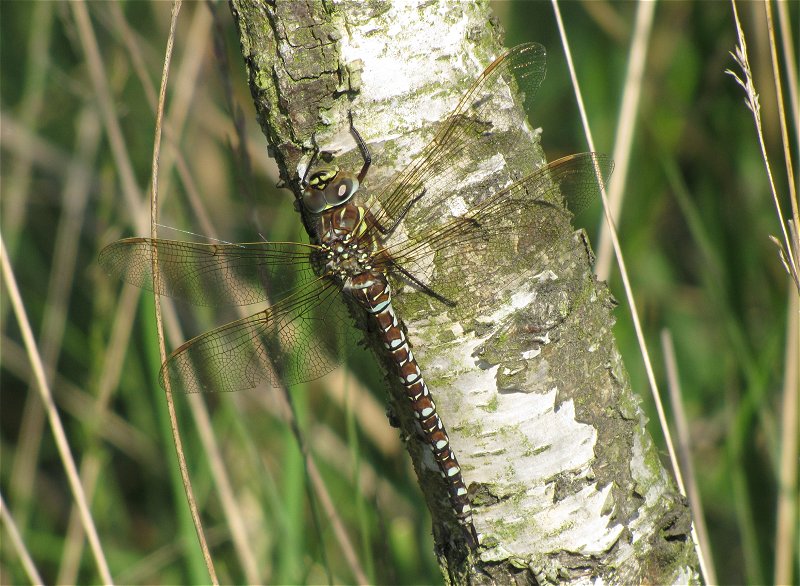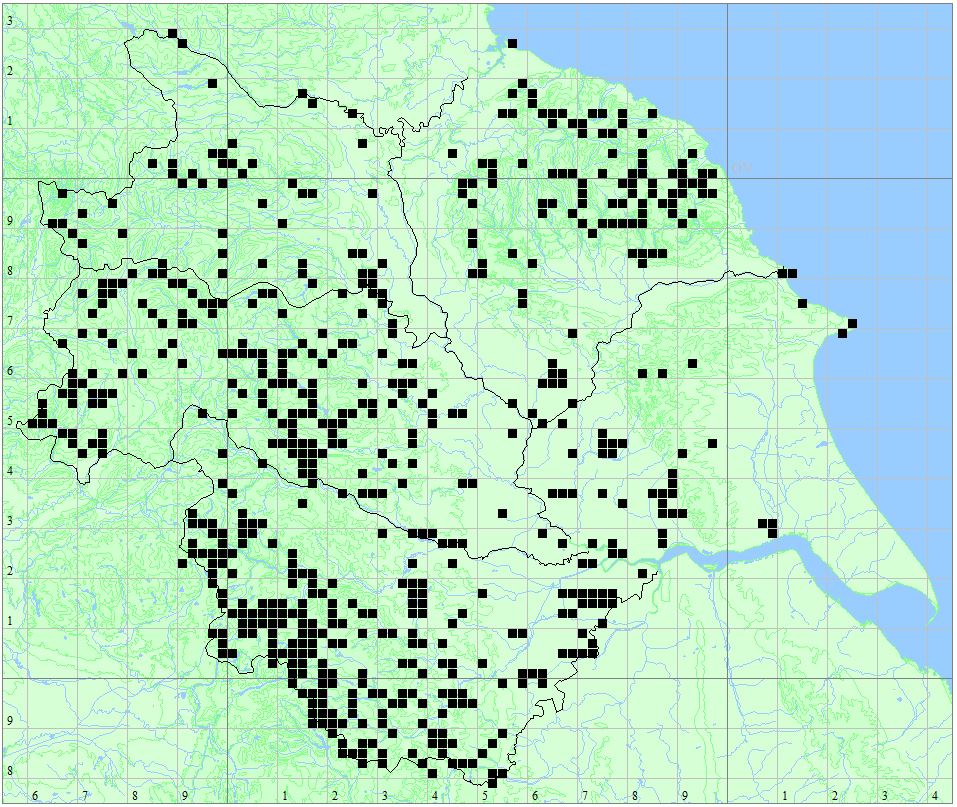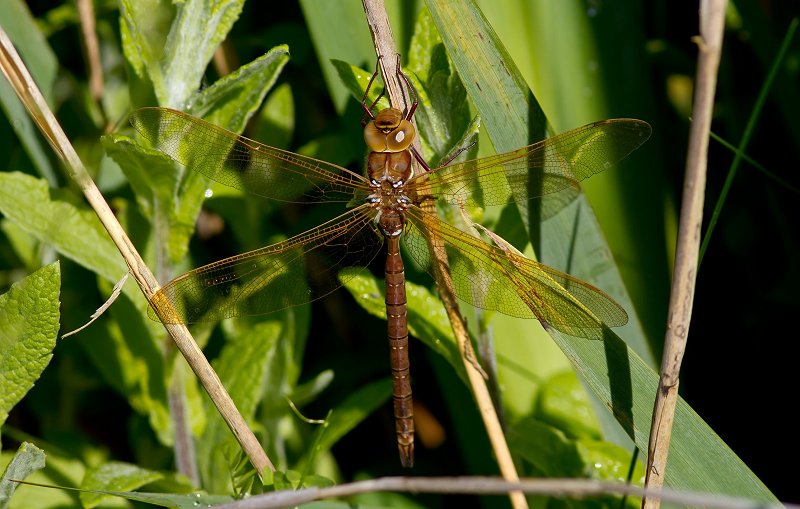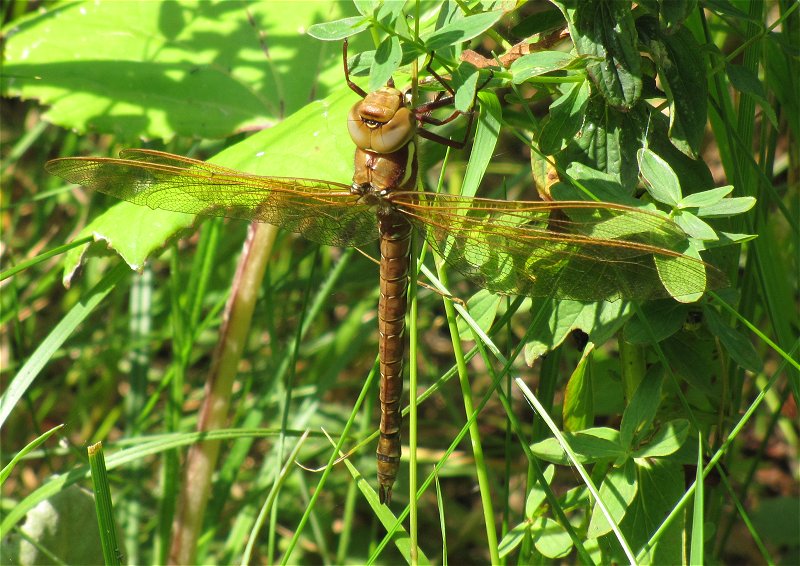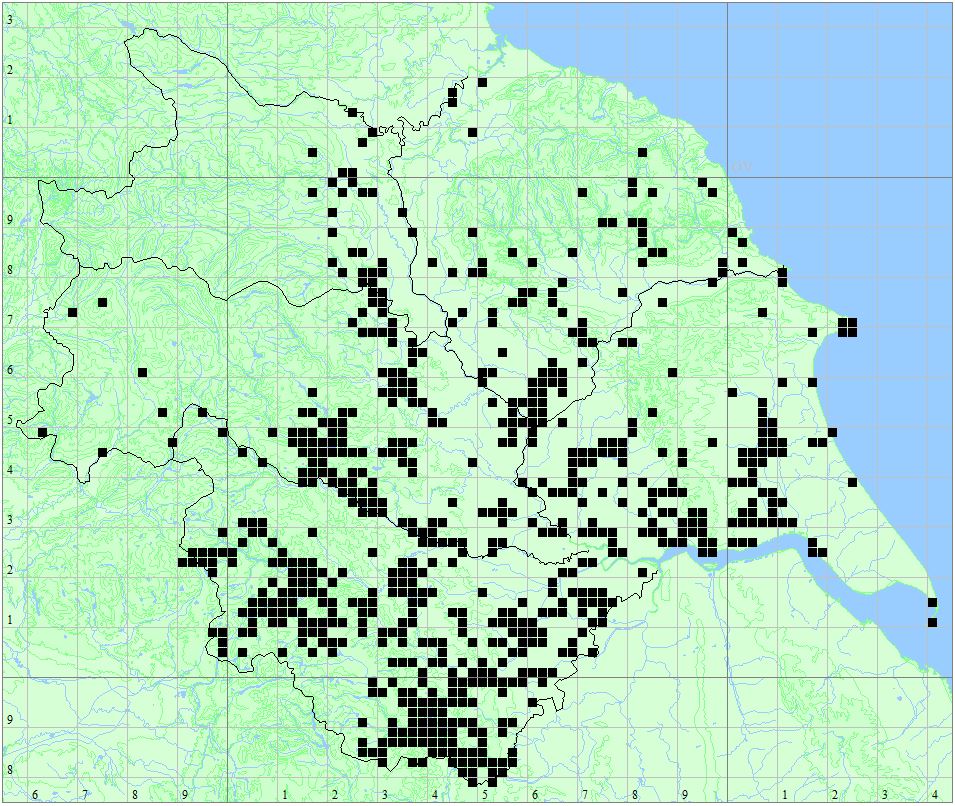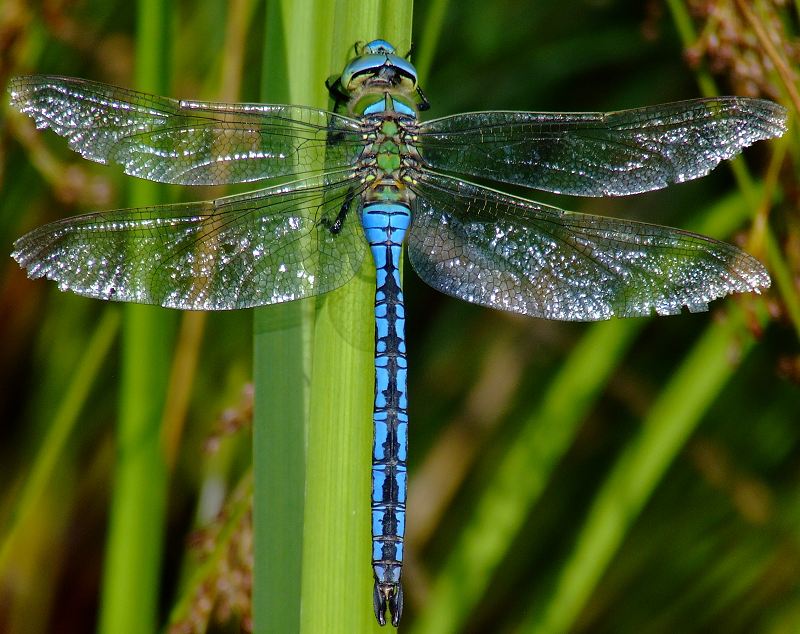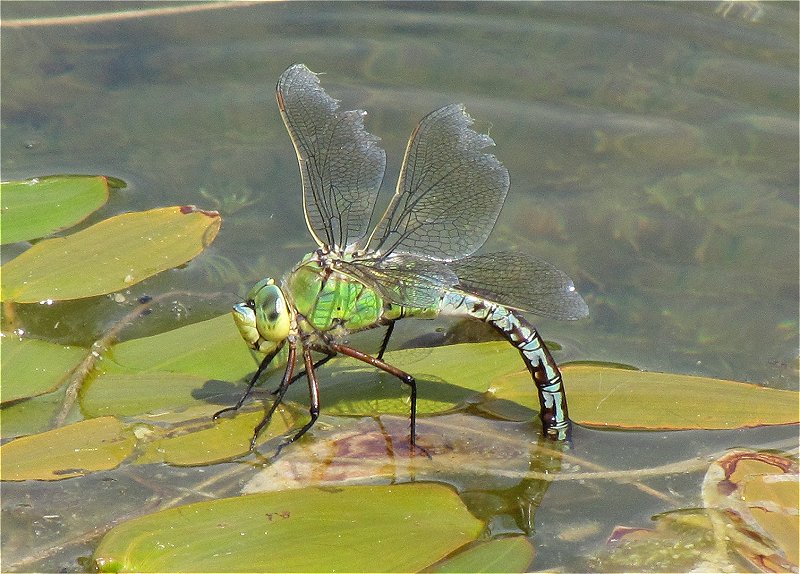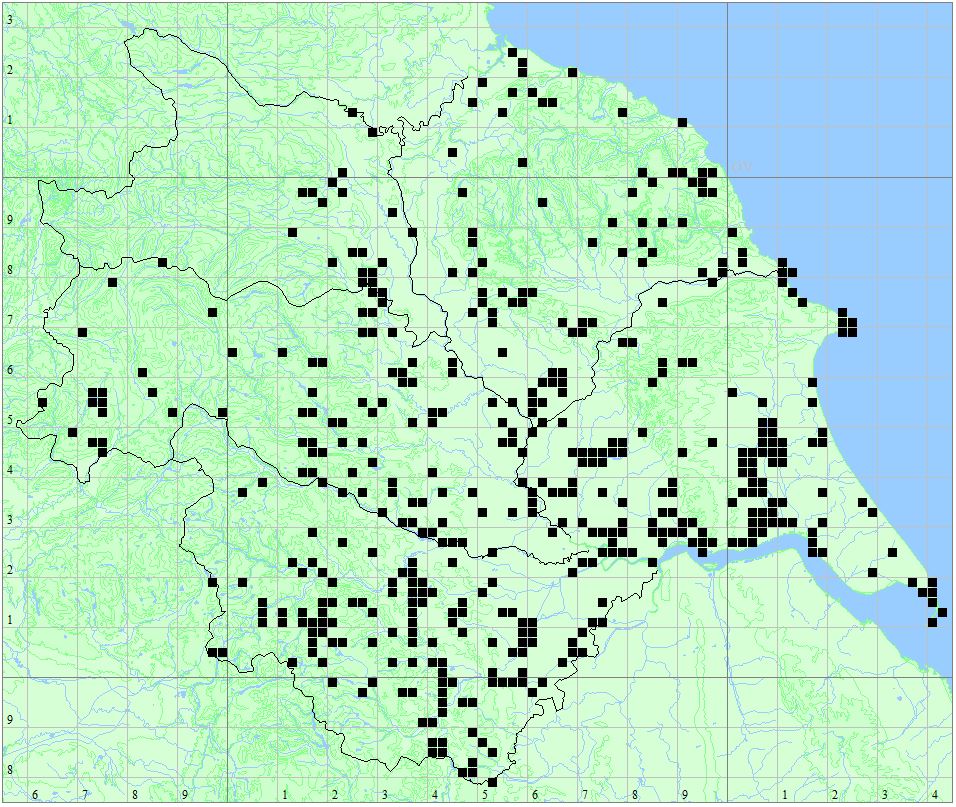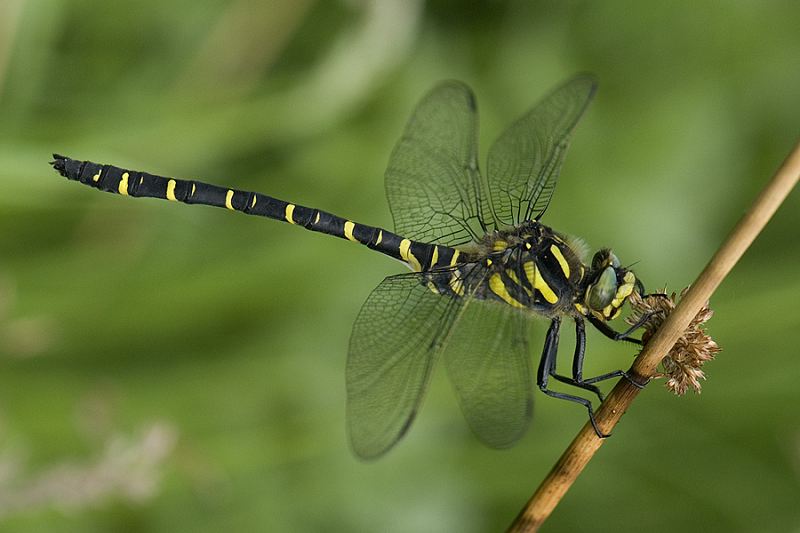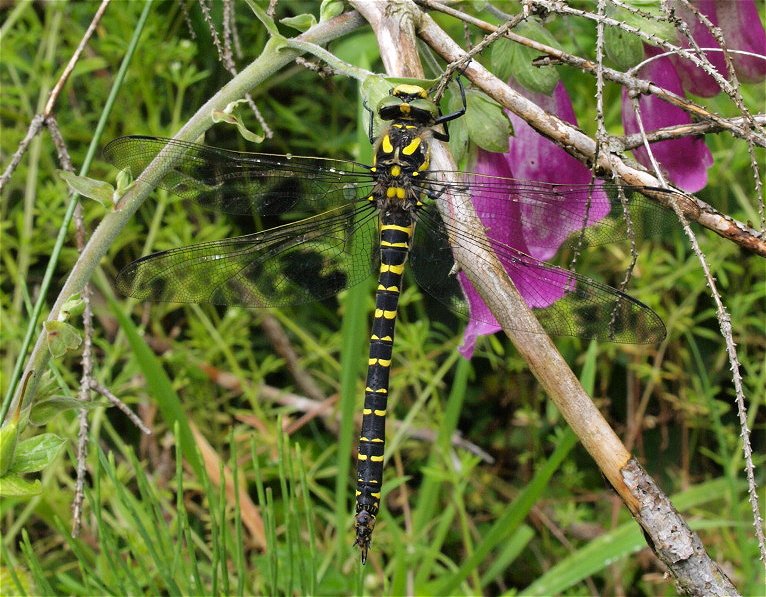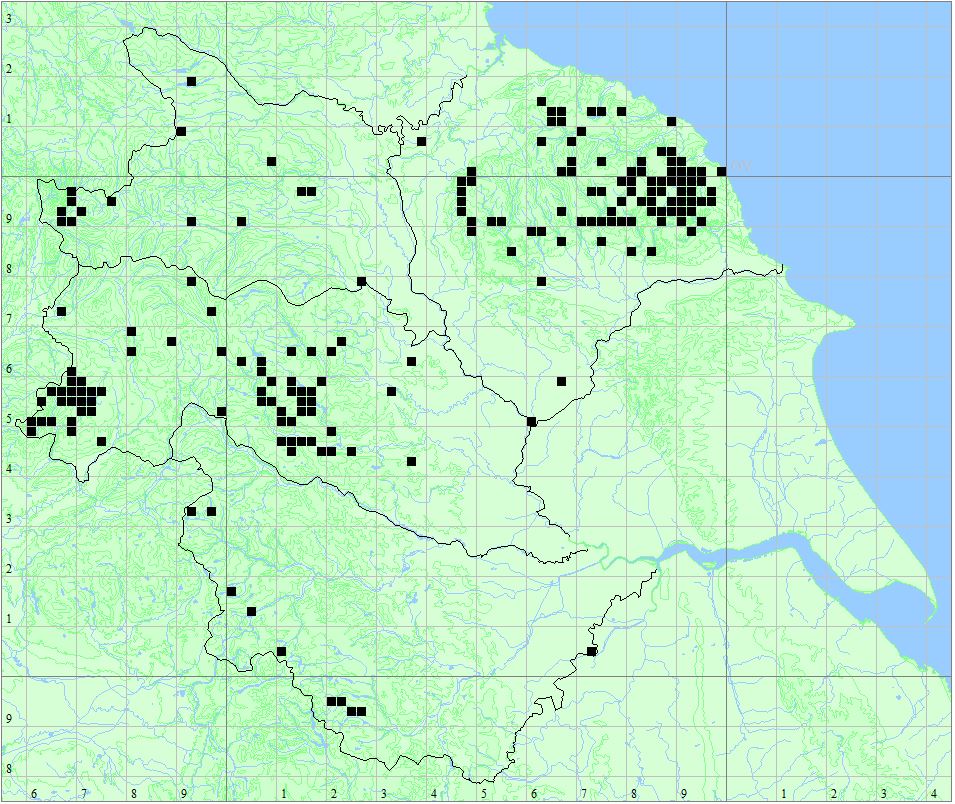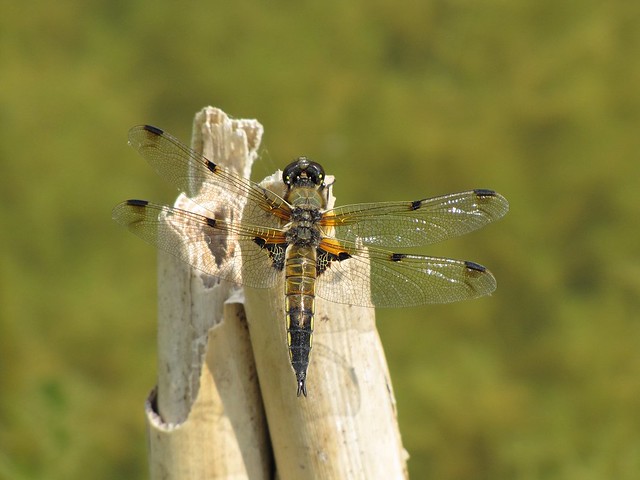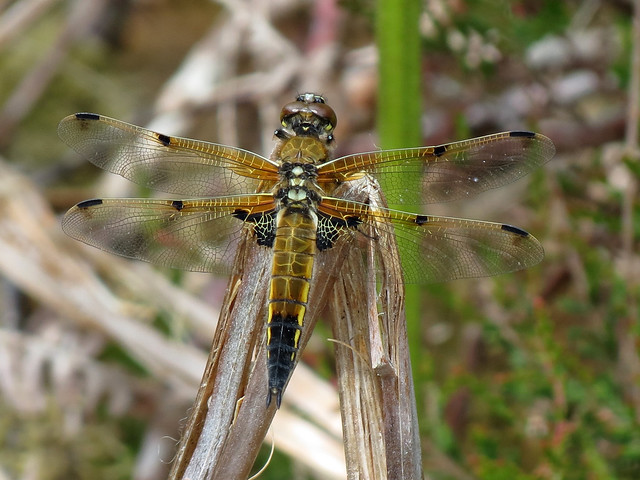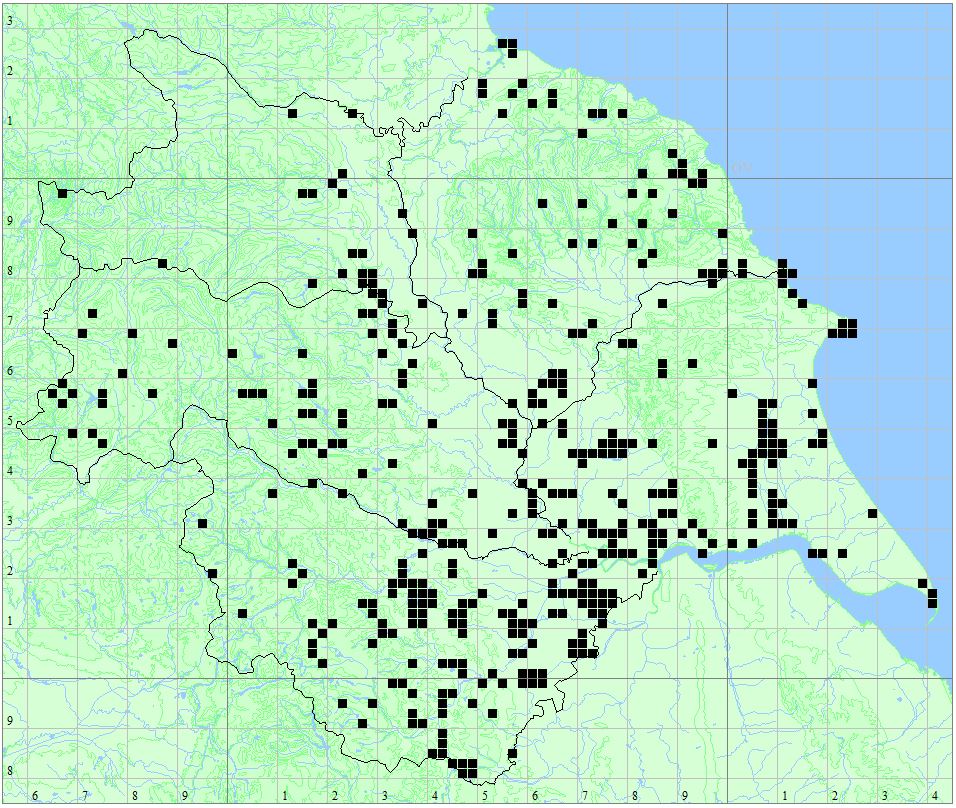Length
45-49mm; Wingspan: Male 58mm; Female 63mm; Hindwing 24-36mm; Larva: 30-35mm
Male
Dark brown-black wings, with iridescent blue veins making the wings appear metallic cobalt blue. Extreme tips and bases may be paler, there is no pterostigma. Wings are broader than the similar Banded Demoiselle. Body is metallic blue-green. Immatures wings are browner.
Female
Dark brown iridescent wings with a white ‘false pterostigma’, larger on forewing than hindwing. Wings are browner than the similar Banded Demoiselle. Body is metallic green with a bronze tip to abdomen. Homeochrome, (male coloured females) are sometimes recorded.
Behavior
Territorial males perch on bankside vegetation. They will flick their wings open and shut, occasionally chasing off passing insects, often returning to same perch. Females only visit water for egg-laying or seeking a mate, both sexes frequently stray well away from water. Flies slowly with a butterfly like flight and frequently settles on bankside vegetation or trees.
Habitat
Restricted to faster running clear water, found only along streams and rivers, often acidic, with sand or gravel bottom. Mostly found along heathland or moorland streams, though can also occur in farmland and woodland, including well shaded streams. Prefers cooler water than Banded Demoiselle. As streams broaden this species gives way to Banded Demoiselle, where there may be a broad overlap. Occasional hybridisation may take place. Sensitive to waterway management (clearance of vegetation) and pollution.
Flight Period
Status
VC61 – Only finds its way into the Vice-county due to the new course of the River Hertford being cut south of the old North and East Riding County Boundary. In many places this is within metres of the boundary.
VC62 – Extremely localised to the south-eastern area of the North Yorkshire Moors.

